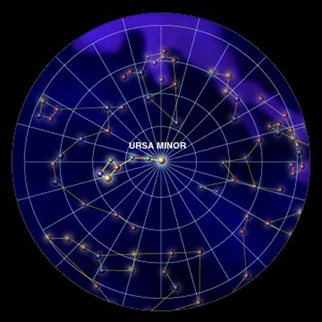Playing is Learning
The Different Stars of Ursa Minor
June 17th, 2015
| Ads | ||
|
Play the Challenge
|
||
|
A New Word is Coined A new Character is revealed A new Game is Afoot |
An Edutainment Adventure Based on Three Rounds of Investigations
|
|
|
Welcome to the World of PROFESsee™by seeCOSM™ PROFESsee™ is my title. I am the perpetual learner, in pursuit of knowledge, wisdom and truth. I derived my name from professor |
 |
|
|
The issues about the study of the universe and the things contained in it have been an age-long exercise. This is the reason why scientists and astronauts have been able to have a comprehensive study and explanation of the issues concerning the planetary organs, especially the moon, the stars and the sun. The Ursa Minor is one of the constellations found in the orbit, and this constellation is made up of stars that are usually referred to as the little dipper. The little dipper stars that make up the Ursa Minor constellation have their handle as the Little Bear's tail, while their cup is the Bear's flank. The Ursa Minor is abbreviated UMi, with its genitive definition or plural as Ursae Minoris. However, the direct English translation and name of the Ursa Minor is the “Lesser Bear.” It is located in the sky, with its ascension taking 15 hours, and declination about 70 degrees. However, you can only see it at 90 and -10 degrees. The best normal time to see the Ursa Minor is during June, around 9:00PM. Furthermore, the Ursa Minor contains five different stars. These stars include the POLARIS, which is also called the Alpha UMi, the Kocab, which is also called the Beta UMi, the Pherkad, which is also called the Gamma UMi, the Yildun, also called the Delta UMi, and the Pherkad Minor, also called the 11 UMi. There have been some conflicting reports of facts about the Ursa Minor. what we know for sure is that the Polaris is obviously the most famous star in the minor. It is also the North Star because at the moment it is being located at the North Pole. Nevertheless, studies have also revealed that it will be there for 14000 years, before it moves out for Vega to take the position of the North Pole for another 14000 years before it comes back. This star is presently located in such a way that it will be located directly above your head if you are standing at the North Pole. This is the star that directs you towards the north, and at the moment; it is used for navigational purposes. Can you Answer the questions? Image courtesy of: http://www.windows2universe.org/the_universe/Constellations/circumpolar/ursa_minor.html |
||
Latest News / Events
E-mail [email protected]
The Professee™ Newsletter Beta
http://www.seecosm.com/
http://www.seecosm.com/

